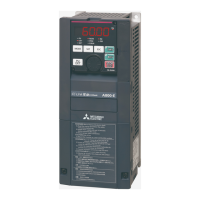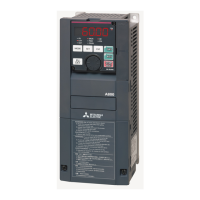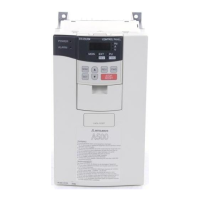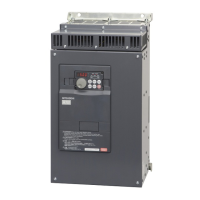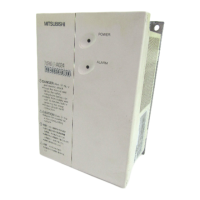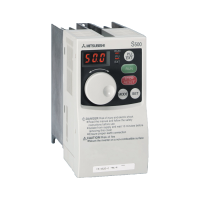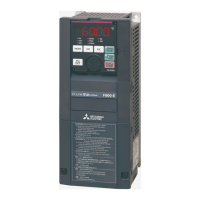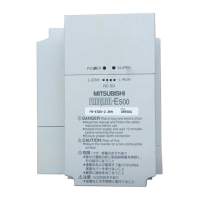Control method
PARAMETERS
159
5
Real sensorless vector control
• The motor speed estimation enables the speed control and the torque control to control currents more accurately. When a
high-accuracy, fast-response control is needed, select Real sensorless vector control, and perform offline auto tuning.
• This control method can be applied for the following purposes:
- To minimize the speed fluctuation even at a severe load fluctuation
- To generate a low speed torque
- To prevent machine from damage due to a too large torque (torque limit)
- To perform the torque control
POINTPOINT
• The Real sensorless vector control requires the following conditions.
If the conditions are not satisfied, select V/F control. Otherwise, malfunctions such as insufficient torque, uneven rotation may
occur.
• For the motor capacity, the rated motor current should be equal to or less than the rated inverter current. (It must be 0.4 kW
or higher.)
Using a motor with the rated current substantially lower than the rated inverter current will cause torque ripples, etc. and
degrade the speed and torque accuracies. As a reference, select the motor with the rated motor current that is about 40% or
higher of the rated inverter current.
• Offline auto tuning is performed.
Offline auto tuning is necessary under Real sensorless vector control even when the Mitsubishi motor is used.
• Single-motor operation (one motor to one inverter) is preformed.
• A surge voltage suppression filter (FR-ASF/FR-BMF) or sine wave filter (MT-BSL/BSC) is not used.
Vector control
• When FR-A8AP is mounted, full-scale vector control operation can be performed using a motor with encoder. Fast
response/high accuracy speed control (zero speed control, servo lock), torque control, and position control can be
performed.
• What is vector control?
Vector control has excellent control characteristic compared to V/F control and other controls. The control characteristic of
the vector control is equal to those of DC machines.
This control method can be applied for the following purposes:
- To minimize the speed fluctuation even at a severe load fluctuation
- To generate a low speed torque
- To prevent machine from damage due to a too large torque (torque limit)
- To perform torque control or position control
- To control the torque at a servo-lock status (motor shaft stopped status)
POINTPOINT
• Vector control requires the following conditions.
• When the conditions are not satisfied, malfunctions such as insufficient torque, uneven rotation may occur.
• For the motor capacity, the rated motor current should be equal to or less than the rated inverter current. (It must be 0.4 kW
or higher.)
Using a motor with the rated current substantially lower than the rated inverter current will cause torque ripples, etc. and
degrade the speed and torque accuracies. As a reference, select the motor with the rated motor current that is about 40% or
higher of the rated inverter current.
• The motor described in the table below is used.
• Single-motor operation (one motor to one inverter) is preformed.
• The wiring length from inverter to motor is 30 m or less. (When the wiring length exceeds 30 m, perform offline auto tuning in
a wired state.)
• A surge voltage suppression filter (FR-ASF/FR-BMF) or sine wave filter (MT-BSL/BSC) is not used.
Motor Condition
Vector control dedicated motor (SF-V5RU 1500 r/min series)
Offline auto tuning is not required
Mitsubishi standard motor with encoder (SF-JR)
Mitsubishi high-efficiency motor with encoder (SF-HR)
Mitsubishi constant-torque motor with encoder (SF-JRCA 4P, SF-HRCA)
Other motors
(motors other than SF-V5RU 1500 r/min series, other manufactures' motors, etc.)
Offline auto tuning is required
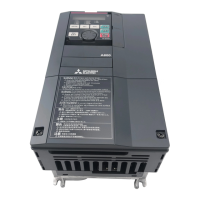
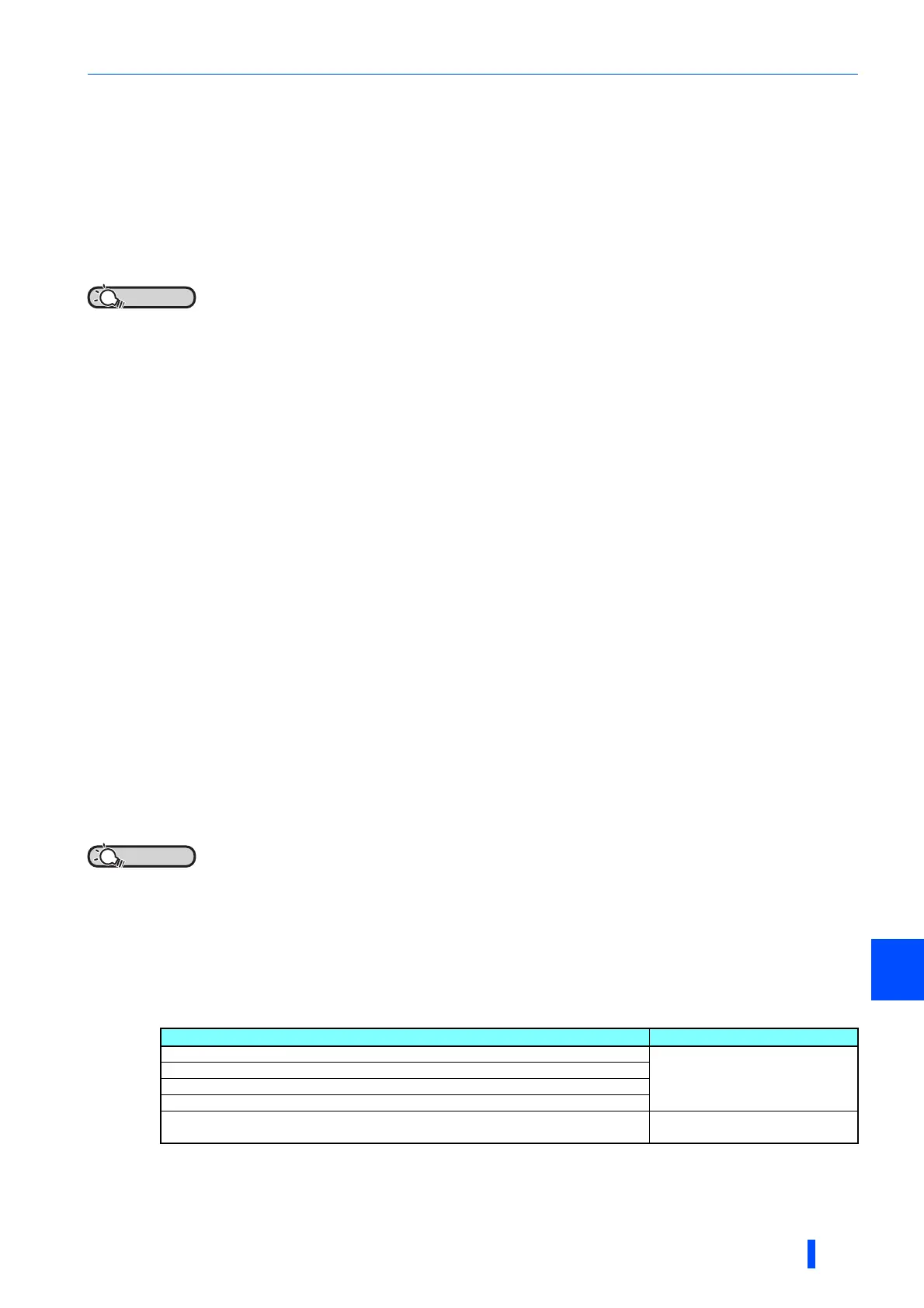